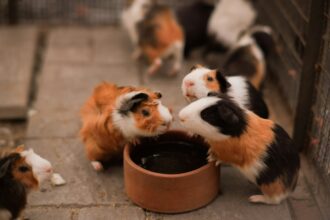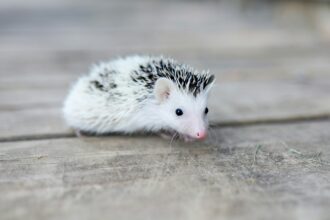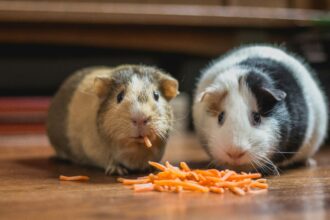Here’s the updated version with the relevant keywords added:
A guide to smart feeding choices for happier healthier hamsters, rabbits, guinea pigs, and gerbils
Feeding small pets seems simple at first—but if you’ve ever wondered how many treats are too many or whether your guinea pig diet is truly balanced, you’re not alone. Balancing meals and treats is essential for small pet dietary needs, but with so many snack options and pellet varieties, it’s easy to get overwhelmed.
Whether you’ve got a fluffy bunny, a social guinea pig, a speedy hamster, or an active gerbil, this guide will help you develop a small pet diet plan that meets their nutritional needs without overindulging in the treat jar.
Why Balanced Feeding Matters for Small Pets
Small animals have fast metabolisms and sensitive digestive systems. That means even a small imbalance—too many sugary snacks or not enough fiber—can cause health issues like obesity, gut problems, or vitamin deficiencies.
A good small animal feeding guide always starts with these four building blocks:
- Species-appropriate hay or base diet
- Fresh vegetables in moderation
- Clean fresh water daily
- Healthy low-sugar treats on occasion
Let’s break down how this looks for each pet—and how to work treats into their meal plan responsibly.
The Foundation: Main Meals for Small Pets
Guinea Pig Diet
Guinea pigs are grazers and rely heavily on hay and veggies. Their bodies don’t produce vitamin C, so they need it from food every single day.
Their core diet includes:
- Unlimited timothy hay or rabbit hay types
- 1 cup daily of fresh vegetables for guinea pigs like bell pepper, parsley, and leafy greens
- A small portion of guinea pig-specific pellets—ideally the best guinea pig pellets with vitamin C and no seeds
You can rotate guinea pig food varieties and add guinea pig fruits and veggies once or twice a week—such as apple slices (no seeds) or a strawberry.
Treat tip: Opt for healthy guinea pig snacks like dried carrot curls or hay-based nibblers. Skip anything with dairy or added sugar.
Hamster Food Types
Hamsters are omnivores and love a mix of seeds, grains, and the occasional protein bite.
Their main diet includes:
- A species-specific seed mix or pellet blend
- Bits of vegetables like cucumber, spinach, or broccoli
- Small servings of protein (like cooked egg white or a mealworm)
Looking for enrichment? Create homemade hamster food with whole grains, chopped nuts, and dried herbs.
Be mindful with dwarf breeds—proper food for dwarf hamsters means avoiding mixes with dried fruits, which are too sugary.
Treat tip: Focus on hamster treats for healthy teeth—like chew sticks or wooden toys rather than sweet snacks. A treat should never replace a balanced base diet.
And don’t forget hamster water requirements—a clean water bottle with fresh water daily is non-negotiable.
Rabbit Nutrition Tips
Rabbits need high-fiber diets and consistent hay access to keep their gut and teeth in check.
Their regular meals should include:
- Unlimited timothy hay or orchard grass
- 1–2 cups of fresh greens (romaine, kale, basil) per 5 lbs of body weight
- Limited high-quality pellets made for rabbits
If you’re new to rabbits, stick with the best rabbit food for beginners—plain, no-added-fruit pellets that list hay as the first ingredient.
Treat tip: Give healthy snacks for rabbits like fresh herbs or tiny bits of fruit—1 to 2 teaspoons per 5 lbs of body weight, 2–3 times a week. Avoid sugary baked treats.
For active or pregnant rabbits, a high-protein rabbit food may be appropriate—ask a vet before changing diets.
Feeding Pet Gerbils
Gerbils have very specific needs and can be prone to obesity if given too many fatty seeds or fruits.
Their meals should include:
- A gerbil-specific seed mix rich in whole grains
- Occasional vegetables like lettuce or carrots
- Rare bits of apple or banana once a week
Use gerbil food tips to avoid overfeeding sunflower seeds and look for mixes that promote natural foraging.
Treat tip: Use treats as enrichment—scatter feed or place snacks in puzzle toys. Feeding pet gerbils is as much about stimulation as it is about nutrition.
How to Use Treats the Right Way
Treats should make up no more than 5–10% of your pet’s total diet. That means one or two small treats per day, depending on species and size.
Good treat habits:
- Choose safe treats for hamsters, rabbits, and guinea pigs—think herbs, fruit peel, or hay-based biscuits
- Avoid dairy, chocolate, or anything with added sugar
- Offer treats by hand to build trust and bonding
- Save the best treats for training or enrichment activities
You can even make your own! Try homemade rabbit treats or hamster-friendly bites using oats, hay dust, and mashed banana. Keep portions tiny and limit baking frequency to a couple of times a month.
Hidden Calories in Pellets and Snacks
It’s easy to accidentally overfeed by relying on pellets or store-bought mixes. These often include high-fat or sugary extras that your pet doesn’t need.
When buying food:
- Read the label—choose single-species formulas
- Skip products with colored pieces, dried fruit, or seeds (unless species-appropriate)
- Look for fiber-rich options with added vitamins for small pets
Balance is key. Even the best guinea pig pellets or hamster food types can cause issues if served in excess.
Portion Guidelines and Feeding Frequency
Guinea pigs: Hay always available, veggies daily, pellets once per day (1/8 to 1/4 cup)
Hamsters: 1 tablespoon mix per day plus small protein or veggie snack
Rabbits: Unlimited hay, greens daily, pellets based on weight
Gerbils: 1 teaspoon mix daily with occasional veg and treats
If in doubt, follow a basic small pet diet plan and watch for signs like weight gain, soft droppings, or food hoarding.
Proper Food Storage for Small Animals
Food quality drops fast without proper storage. Keep pellets, seeds, and hay in airtight containers and away from sunlight and moisture. Wash water bottles daily and rinse veggie bowls after each feeding.
Using proper food storage for small animals helps avoid mold, bacteria, and loss of vitamins—especially vitamin C in guinea pig food.
Final Thoughts: Healthy Pets Start With Smart Meals
Feeding small pets isn’t about rigid rules—it’s about observation, care, and balance. Watch how your pet responds to certain foods. Are they excited? Lethargic? Gaining weight?
Adjust meals based on:
- Energy levels
- Coat condition
- Droppings
- Appetite and mood
If you’re unsure about what’s right for your pet, talk to a vet familiar with small pet dietary needs.
When you stick to fresh food, balanced portions, and only the best treats, your little friend will stay healthy, happy, and full of life—and that’s what good pet ownership is all about.







